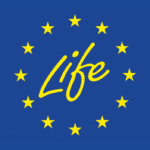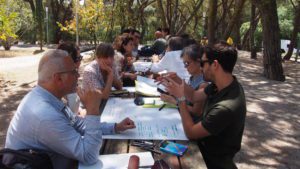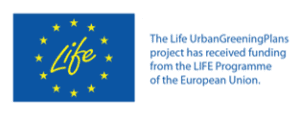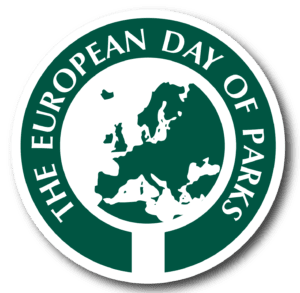Out now: EUROPARC Annual Report 2021
EUROPARC is continuously working for the benefit of Protected Areas in Europe. Discover all that we’ve done last year through the EUROPARC Annual Report 2021!
Life moves by fast! All the more reason so sit back and reflect every now and then. The EUROPARC Annual Report will help you to do just that.
In it, you can find all the webinars, publications, project outcomes and other outputs that we produced in 2021.
Obviously, the previous year was still heavily marked by the COVID-19 Pandemic, however EUROPARC is happy to say that we still were able to complete a huge amount of work. All of this helped create our vision of a
Sustainble Nature, Valued by People
From the online EUROPARC Conference, to the start of new projects like LIFE UrbanGreeningPlans and LIFE ENABLE, it is safe to say the Directorate did not sit still! You can also find out what the EUROPARC Sections have been working on, in the special part of the publication dedicated to their outputs.
Policy work, networking & new communication tools
We can look back on a successful, digital, Seminar Dialogue with the European Commission, where we discussed the targets and guidelines for the EU Biodiversity Strategy 2030. EUROPARC also published new policy documents on Sustainable Agriculture and of course we represented our members in Brussels throughout the year.
Of course, as always, we put special efforts into connecting our members, a task that become even more important in light of the pandemic. Through the online EUROPARC Conference, different thematic workshops and our webinars, we gave Nature Professionals the change to exchange on a wide range of topics. By making the most of different digital tools we continued to innovate and push the boundaries.
More than ever, good, effective communications underlined all of EUROPARC’s work. We launched the EUROPARC Podcast “Voices From the Parks”, and continued building our online following through Facebook, Twitter and LinkedIn.
All this, and much more, is waiting for you in this new edition of the Annual Report. So, sit back, relax and reflect on the year past.
The Annual Report is available in three languages:
Flip through the English Version
Flip through the German Version
Flip through the French Version
You can also download the PDF versions from the EUROPARC library here.

EUROPARC’s Annual Report has received funding from the LIFE Programme of the European Union. All opinions expressed in the publication belong only to the authors.
Creating Urban Greening Plans – Lisbon Meeting Report
Working sessions in Monsanto Forest Park
 From the 7th to the 9th of June 2022, LIFE UrbanGreeningPlans (UGP) project partners and experts came together in Lisbon for a Periurban Park Symposium. Here, you can find the outcomes report, detailing experiences from Portugal’s Periurban Parks, as well as reflexions on what is needed to create successful Urban Greening Plans.
From the 7th to the 9th of June 2022, LIFE UrbanGreeningPlans (UGP) project partners and experts came together in Lisbon for a Periurban Park Symposium. Here, you can find the outcomes report, detailing experiences from Portugal’s Periurban Parks, as well as reflexions on what is needed to create successful Urban Greening Plans.
Periurban Park Symposium – learnings from Portugal
The meeting consisted of two plenary sessions, seven working sessions and three field trips. It was a closed meeting, with apart from the project partners, only invited experts attending the Periurban Park Symposium. Presentations were held by, among others, Ana Cristina Lourenço, Câmara Municipal Lisboa, João Cardoso de Melo, Parque natural Sintra-Cascais and Ines Rosario, Faculty of Sciences of the University of Lisbon.
We must work with nature
Said Ana Cristina Lourenço of Lisbon. The city, which won the European Green Capital Award 2020, is using Green Infrastructure (GI) as its main tool to face climate change. Not just for the ecosystem services GI delivers, but also for the health of people, social amenities and air quality. Additionally, Lisbon has a huge Periurban Park: the Monsanto Forest Park that supports the city in its greening efforts. In fact, the Park used to be a completely degraded, empty area. Over the last 70 years it was restored and became a sanctuary for biodiversity, and city dwellers. As such, it was the perfect place for project partners to come together to further develop concrete actions to support UGPs.
During the symposium, different large scale nature restoration and connectivity projects were introduced. They all shared the same goal: connecting urban areas to natural landscapes and improving GI. Gonçalo Andrade presented a big project in the north of Portugal: “Parques do Porto”. It will create a GI network of Periurban Parks for the Porto Metropolitan Area, starting by identifying the Parks that already exist and potential new areas and ecological connections. This is a great example of common compromise and common action undertaken by several municipalities, whilst adapting agile project management.
Additionally, different methods to monitor biodiversity were presented. From citizen science, to the newest technological developments, there are many tools to help nature managers analyse their work. After all, only through effective monitoring can the impacts of actions be successfully analysed.
Working sessions

Working sessions in Monsanto Forest Park
The valuable inputs from invited speakers in the morning, provided the UGP project partners with inspiration for the working sessions in the afternoon. Following the “World Café” technique, participants
worked in groups on answering a number of questions related to Green Infrastructure, Biodiversity Monitoring, Nature-based Solutions (NBS) and Urban Greening Plans. Among others, they discussed:
- How UGPs can be adaptable to external drives like climate change;
- The best way to measure biodiversity enhancement in urban areas;
- How to use positive communication to raise awareness on the climate emergency & the importance of NBS;
- How UGP and NBS can help meet the EU restoration targets.
Urban Greening Plans need to become URGENT Greening Plans if we want to adequately respond to Biodiversity loss and climate change.
Field trips
The programme also included diverse field trips to Quinta do Pisão Natural Park, Arrabida Natural Park, and of course the Monsanto Forest Park. All three of these area face “typical” challenges for Periurban Parks like:
- Overcrowding;
- Vandalism;
- Wide range of users.
The visits gave a valuable opportunity for exchange and provided participants with best practice examples of how these challenges are faced by the different managing bodies.


Activity report: European Day of Parks 2022
On the 24st of May we celebrated the European Day of Parks 2022 – We are Nature: Rethink, Restore, Reconnect. This year, we brought special attention to restoring nature, and our connection to it. Have a look at what was happening across Europe here!
The outcomes of the European Day of Parks 2022 – We are Nature: Rethink, Restore, Reconnect
It was great to see, that after two years of pandemic related online European Day of Parks, this year many Protected Areas across Europe organised face to face events on and around the 24th of May. The European day of Parks (EDoP) aims at bringing people closer to Nature by offering a diversity of activities and events in Protected Areas across the EUROPARC Network. The events that were organised addressed people of all ages: children, youngsters, young adults, families and seniors.
It was amazing to see so many Protected Areas organising events to connect people to the landscape. From a photo contest organised by Nationale Naturlandschaften e.V. to picking up trash whilst kayaking in Spain, or going on a nature “bingo” in the the Netherlands – our network got creative for this year’s edition!
There was quite a buzz on social media as well, and we are happy so many Parks participated in the European Day of Parks in one way or another. To get an overview of all that was happening in the media, have a look at our Media and Activity report:
The report is best viewed in Google Chrome, links might not work when using other servers.
We want to thank everyone that made this European Day of Parks a success!
Promotional materials
EUROPARC created two videos to help promote the European Day of Parks (one already displayed above):
We also created guidelines to help Parks and Protected Areas get inspired:
Additionally, the official poster and banner for the European Day of Parks 2022 were translated into 20 languages!
Catalan | Croatian | Czech | Dutch | English | Estonian | French | Finnish | German | Greek | Hungarian | Italian | Latvian | Lithuanian | Polish | Portuguese | Romanian | Slovenian | Spanish | Welsh
About the European Day of Parks
Imagine a day when all Parks and Protected Areas come together across Europe, celebrate their successes and declare the value and benefits of Europe’s Protected Areas to communities, decision-makers and the wider public. Well, it is EUROPARC’s European Day of Parks!
Every year European Day of Parks takes place on and around 24th of May. It aims to bring people closer to nature and raise public awareness on the importance of the natural beauty preserved in Protected Areas and the importance of conservation and sustainable management of those places.
Check here to see the previous editions.


How Protected Areas can contribute to the new EU Nature Restoration targets
On June 22, 2022, the European Commission proposed a new Nature Restoration Law, an essential part of the EU Green Deal and Biodiversity Strategy for 2030.
The EU Nature Restoration law
The Commission set multiple targets to restore degraded ecosystems such as wetlands, rivers, forests, grasslands, marine ecosystems, and the species they host. This proposal combines both general and specific objectives, ensuring long-term nature recovery and specific implementation measures.
By 2030, these measures should extend to at least 20% of the land and water areas in the EU, and by 2050, they should apply to all ecosystems that require restoration.
Today, for the first time ever, we are proposing a law that would require all Member States to restore nature. We need to repair the 80% of our nature that’s in bad shape, and bring nature back to our cities, towns, forests, agricultural land, seas, lakes, and rivers – the nature that our citizens want and need.
Executive Vice-President Frans Timmermans, statement from press release of the new proposal.
Why do we need this?
Unfortunately, 81% of habitats in Europe are in a bad state despite the Birds and Habitats Directives having restoration goals. A review of the Biodiversity Strategy for 2020 highlighted the voluntary nature of these goals as the core problem and suggested a legally binding tool: The EU Nature Restoration Law
This is the first new environmental legislation since 2015 and will be relevant for areas inside and outside Natura 2000 protected areas, for urban green spaces and for agricultural landscapes. Once the regulation is approved, the work can start immediately and the law can be enforced without having to wait for national laws to be laid down first (as would be the case for a Directive).
Read the full proposal here or check out the EU Factsheet here.
What are the key targets?
- restore habitats and species protected by the EU nature legislation
- reverse the decline of pollinators by 2030
- no net loss of green urban spaces by 2030 and a minimum of 10% tree canopy cover in European cities
- improved biodiversity on farmlands
- restore drained peatlands
- healthier forests with improved biodiversity
- at least 25.000 km of free-flowing rivers by 2030
- restore seagrasses and sea floors
What are the next steps?
The very next step is that it needs to be approved by the Council and the EU Parliament. Only then is it adopted.
Each Member State is required to submit a National Restoration Plan to the Commission two years after the adoption and then monitor their progress. The first EU report has already been set for June 2031.
You can find more information on timelines and the implementation process here.
How can Protected Areas contribute?
The first step in halting and reversing biodiversity loss is to stop any downward trends. The second step is to restore what was lost. Protected Areas are already doing this! They will be examples of the gold standard of a “good ecological status” for many habitat types.
Protected Areas are also leading the way with restoration efforts and can share their journey, best practices and expertise. This was what the 11 experts from across Europe who gathered for the EUROPARC 2022 Siggen Seminar discussed earlier this year.
Read more about it here or check out the outcomes presentation here.
Additionally, creating new Protected Areas is a tool for restoration. Once destructive activities are restricted, an ecosystem can recover by itself. This passive restoration through Protected Areas will be a key tool for the restoration of marine areas.
What happens when areas are restored?
The EU Nature Restoration Law should feed into other strategies on sustainable development, renewable energy and conservation. Once an area is restored, or sometime as it is being restored, it can be used for one or more of the following:
- a new Protected Area to achieve the goal of 30% of land and sea protected by 2030
- new wind and solar energy projects to reduce reliance on fossil fuels
- sustainable agriculture (e.g. a rewetted peatland can be used to grow cranberries)
Estimates say that for every 1€ invested in nature restoration, we receive 8€ of benefits. These will be not just ecosystem services like clean air and water but also opportunities for local communities such as new jobs in sustainable businesses or nature protection.
EUROPARC will continue to follow the process of the nature restoration law – so watch this space. Once it is adopted, it is important the during the creation of the National Restoration Plan, policy makers consult with Protected Areas and profit off the wealth of experience they have to offer. It is during this time, that nature conservation professionals and Protected Area managers will need to emphasise how essential nature restoration is to climate change adaptation, biodiversity and human health, and how important it is to bring the whole community onboard for successful implementation.
Interested in nature restoration?
Check out our knowledge hub here.